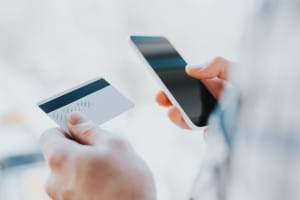The nation’s largest banks have moved into the person-to-person payment sphere with the rollout of Zelle, a bank-owned mobile application that allows customers to make P2P payments without leaving the protection of the data center of their financial institution. It’s positioned as a direct competitor to Venmo and it’s reportedly a lot more efficient at processing transactions.
The launch, which began in 2016, is already present or soon will be in the mobile banking apps of more than 30 participating financial institutions over the next 12 months on a rolling basis, according to Early Warning, Zelle’s vendor. That would take into account more than 86 million U.S mobile banking consumers, Zelle said in a statement. A standalone app is on its way, according to a report last month from Business Insider.com.
“Our goal is to revolutionize how U.S. consumers and businesses send and receive money by providing a network that exists within the safety of their respective financial institution,” Abe McCallum, vice president of products at Early Warning, told Banker & Tradesman in an email. And that applies no matter where they bank.
Zelle claims it can transfer funds from one bank account to another in minutes, using only a recipient’s email address or mobile phone number – an alternative to checks and cash. Sender and recipients don’t need to be customers of the same bank, and only the sender needs to have access to Zelle, McCallum said. If the recipient’s financial institution isn’t yet on Zelle, recipients can still receive money by registering at clearXchange, enabling anyone with a U.S.-based bank account to use the standalone Zelle app to send, request and split payments.
Check, Please!
Bank of America is one of the 30 banks adopting the Zelle application. Michelle Moore, head of digital banking at Bank of America, said in a statement that this year will see enhanced payment solutions on a personalized basis – including the ability among contacts to split expenses in real time.
The Zelle app allows or will soon allow sending, requesting and splitting expenses among multiple contacts or friends – and the addition of a personal note to the payment. An example: several people at a restaurant, splitting a check, can do so within minutes if they are in the sender’s mobile phone contacts. A Zelle user will be able to send money to each of the sharers, within minutes, without the need for cash. The same applies for roommates splitting rent and contributing their shares to the person who will be sending the check to the landlord.
Smartphones Drive The P2P Landscape
The Zelle application appears to be yet another move toward a checkless, cashless society, driven by the ubiquity of Smartphones. A Federal Reserve survey from late 2015 noted that 87 percent of U.S. adults had mobile phones, stable from the prior two years, but that smartphone use had jumped to 77 percent in 2015, compared to 71 percent in 2014 and 61 percent in 2013, and that consumers cited the acquisition of a smartphone as their motivation for adopting mobile banking.
At the time of the Fed survey, the three most common mobile banking uses were checking account balance inquiries or recent transactions (94 percent), transferring money between a person’s individual accounts (58 percent) and receiving a text alert from their banks (56 percent).
At that time, mobile payments were less common, with only 24 percent of total mobile phone users making such transactions in the 12 months prior to the survey, but 28 percent of smartphone users reported doing so.
In the service agreement for first-time setup, the prospective sender is required to get the consent of the designated receiver to whom they want to text regarding intent to send payment, in compliance with the Telephone Consumer Protection Act. For a Zelle customer requesting payment, the person from whom payment is requested must first approve the transaction before any money is taken out of their account.
Zelle targets behavior and mobile usage rather than demographics, McCallum said. While Millennials are the first generation of digital natives and are already well-versed in mobile person-to-person payments, the Zelle application wants to bring that usage more demographically mainstream, to customers more used to transactions involving cash and checks.
But other competitors are still gearing up. Apple’s Apple Pay will soon announce new software updated for iPhones and iPads later this year, Business Insider reported. The new payments will be integrated directly into iMessage; security will be confirmed by Touch ID to confirm identity; the money reportedly will go to an Apple Pay cash card which can be transferred to the bank.
Stay tuned for the upcoming payment-processing wars.




 |
| 



